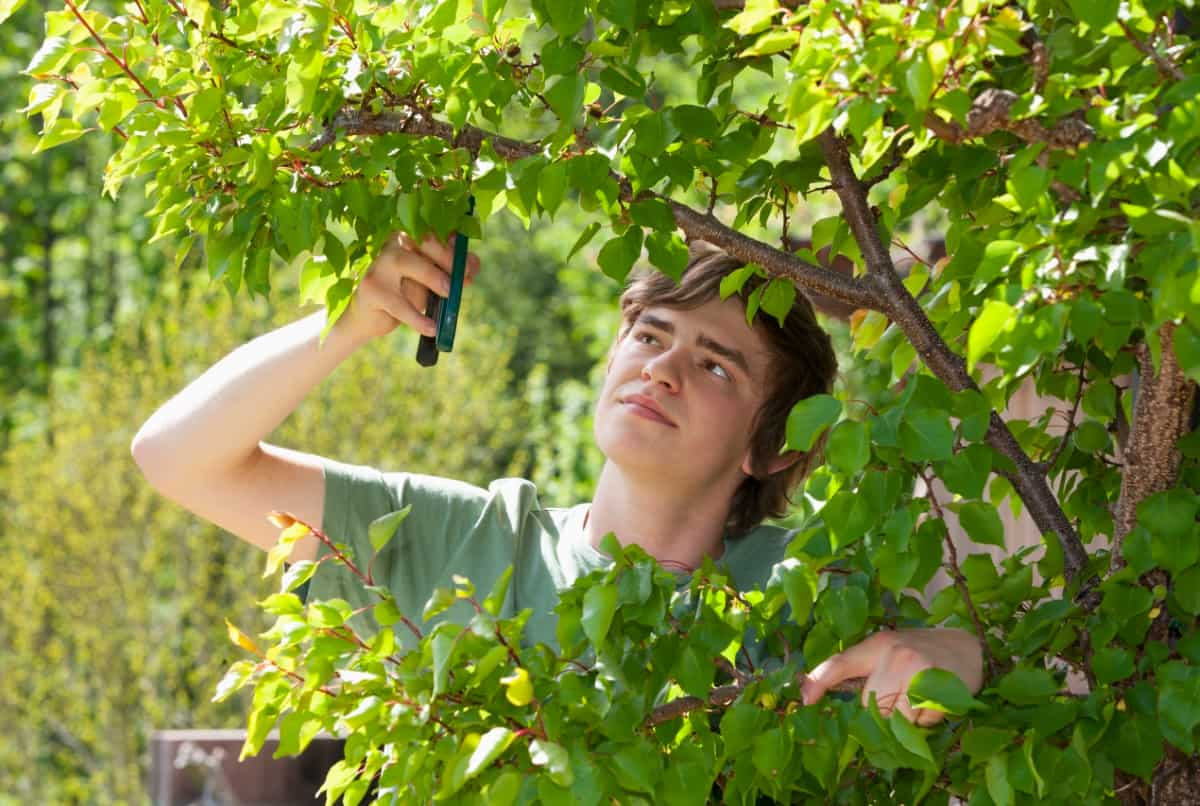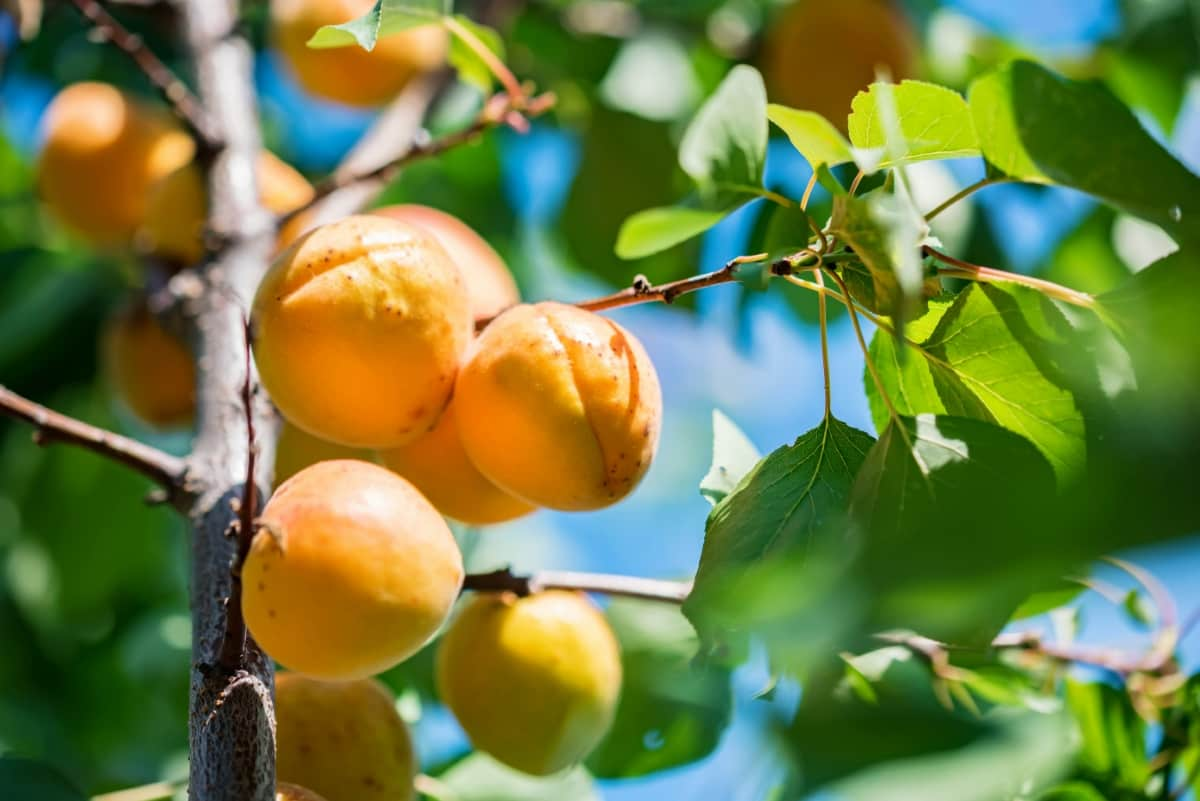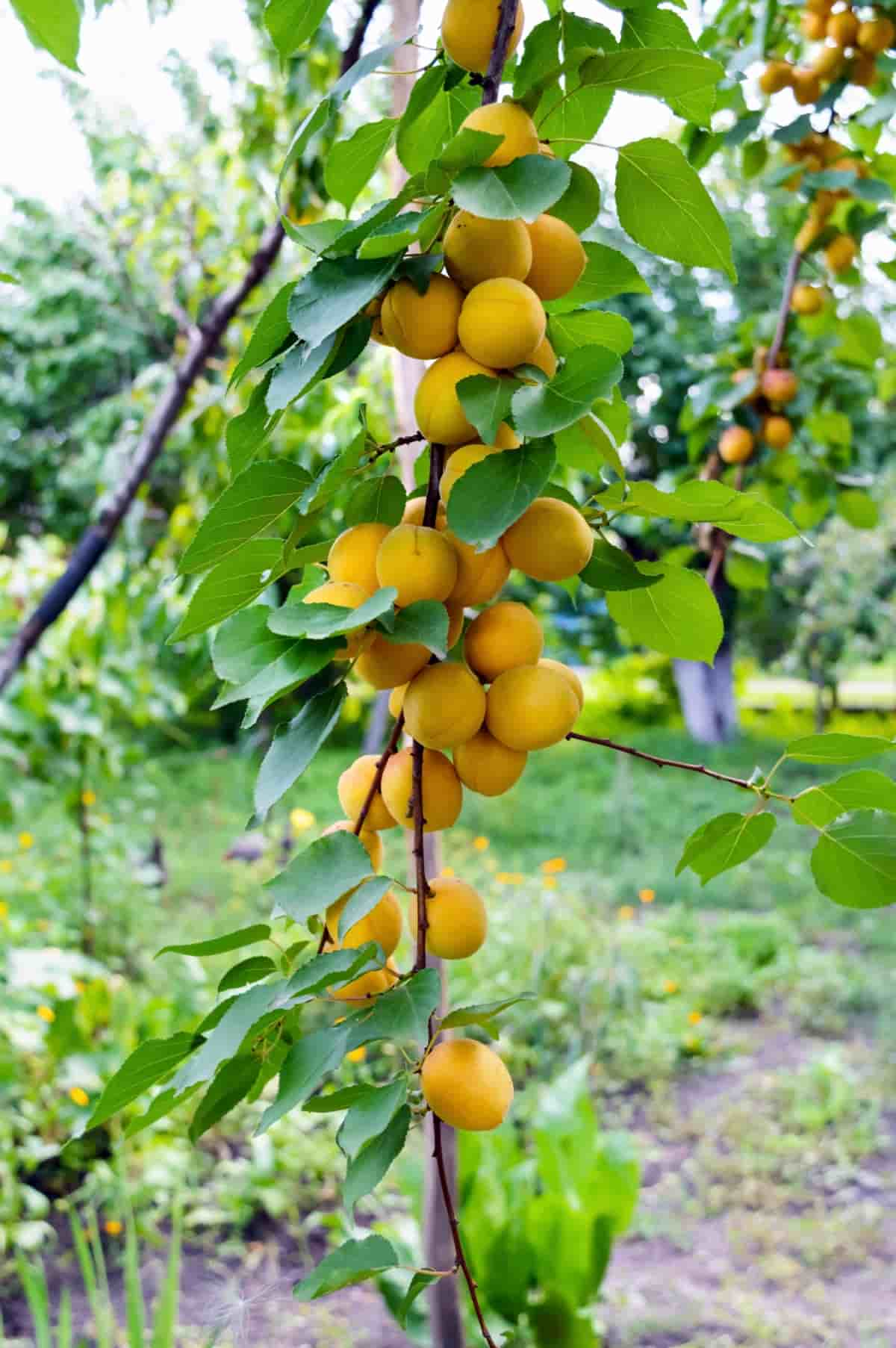Apricot trees are beautiful and fruitful additions to any garden or orchard. To ensure their health and productivity, it is important to train and prune them properly. This document will guide you through training and pruning apricot trees, from understanding their growth cycle to addressing common issues and diseases.

How to Train and Prune Apricot Trees
Understanding the Growth Cycle of Apricot Trees
- The cycle begins in early spring with the emergence of buds and blossoms.
- Pollination occurs through bees and wind, leading to fruit set. As summer approaches, the fruit develops, gradually increasing in size.
- By late summer, the apricots are ripe and ready for harvest.
- After harvest, the trees enter a dormant phase during winter, resting and preparing for the next growth cycle.
Selecting the Right Training System for Apricot Trees
There are several training systems to consider, each with its advantages and disadvantages. The central leader system, for instance, involves a single upright trunk with lateral branches. This system is suited for apricot trees with a strong central leader and needs support against wind damage.
On the other hand, the open center system encourages the growth of multiple scaffold branches that form an open canopy. This system allows for good light penetration and air circulation, reducing disease risk. Ultimately, the choice of training system should be based on factors such as tree vigor, site conditions, and intended purpose.
Pruning Techniques for Young Apricot Trees
Pruning is essential for young apricot trees to ensure their healthy growth and optimal fruit production. Several pruning techniques can be employed to shape and train these trees effectively.
- One common method is “heading back,” where the central leader is shortened to encourage lateral branch development.
- Another technique is “thinning out,” which involves removing overcrowded or weak branches to improve air circulation and sunlight penetration.
- Additionally, “pinching” can encourage branching and prevent excessive vertical growth.
- Regular pruning, preferably during the dormant season, promotes the overall vigor and structure of young apricot trees, resulting in a bountiful harvest.
In case you missed it: 6 Causes of Dying Apricots and How to Fix It?

Training and Pruning Mature Apricot Trees
- Training involves shaping the tree’s structure by selecting and positioning branches. This helps create an open canopy, allowing sunlight to penetrate the tree and improve fruit production.
- Pruning, on the other hand, involves removing dead, diseased, or overcrowded branches. This prevents the spread of diseases and promotes airflow within the tree, reducing the risk of fungal infections.
- Additionally, pruning stimulates the growth of new branches, leading to a healthier and more vigorous tree.
Timing and Frequency of Pruning Apricot Trees
Late winter and early spring are the ideal times to prune the apricot tree to shape the tree – there is less sap flow, less disease pressure, and new buds/branches will develop more readily in the upcoming growing season. Additionally, it’s easier to see all the branches with no leaves in the way!
Summer pruning (after the tree has fruited) should be kept to a minimum and is primarily used to train young trees, deal with pests or disease, or for corrective pruning such as crossing branches, water sprouts, and suckers. The frequency of mature tree pruning ranges from once a year to once every two years.
Proper Tools and Equipment for Training and Pruning Apricot Trees
Proper tools and equipment are essential for training and pruning apricot trees. One of the most important tools is a pair of sharp pruning shears. These shears should have a bypass blade design to make clean cuts by avoiding crushing the branches. Additionally, a pruning saw with a curved blade is useful for removing larger branches.
In case you missed it: How to Grow Apricot Organically: A Step-By-Step Guide with Simple Steps

Other tools that come in handy include a pair of loppers for cutting thicker branches, a pruning knife for precision work, and a sturdy ladder for reaching higher branches. It is also important to have protective gear such as gloves and safety glasses to ensure personal safety while working with these tools.
Addressing Common Issues and Diseases in Apricot Tree Training
Addressing common issues and diseases in apricot tree training is crucial for maintaining healthy and productive trees. One common issue is the lack of proper pruning, which can lead to overcrowding and reduced airflow, increasing the risk of fungal diseases. Regular pruning helps to maintain the tree’s shape and remove dead or diseased wood.
Another issue is pests such as aphids and mites that can cause damage to leaves and fruits. Integrated pest management techniques, including natural predators and targeted pesticides, can effectively control these pests. Diseases like bacterial canker and brown rot can be addressed through proper sanitation practices and the timely application of fungicides.
Promoting Fruit Production Through Pruning Techniques
- By selectively removing certain branches and shoots, fruit trees’ overall health and productivity can be significantly improved.
- Pruning techniques aim to shape the tree, increase sunlight penetration, and promote air circulation, all essential for optimal fruit development.
- Regular pruning helps maintain the tree’s size and shape, prevents overcrowding, and reduces the risk of diseases.
- Additionally, it stimulates the growth of new fruiting wood, leading to increased yields.
- Proper pruning techniques, such as thinning cuts, heading cuts, and rejuvenation pruning, should be employed to maximize fruit production and ensure long-term tree health.
Training and Pruning Apricot Trees for Optimal Sunlight Exposure
- Training and pruning apricot trees is essential for optimal sunlight exposure, directly impacting their growth and fruit production.
- Proper training involves shaping the tree during its early years to establish a strong framework of branches.
- Pruning, on the other hand, involves removing dead, damaged, or overcrowded branches to improve airflow and sunlight penetration.
- It is recommended to prune apricot trees during their dormant period, usually in late winter or early spring.
- By training and pruning apricot trees, gardeners can maximize sunlight exposure to all parts of the tree, resulting in healthier growth and abundant fruit production.
Long-term Maintenance and Care of Trained and Pruned Apricot Trees
- Regular pruning helps to maintain the tree’s shape, control its size, and promote better air circulation.
- It is recommended to prune apricot trees during the dormant season to reduce stress on the apricot tree.
- After pruning, removing any dead, damaged, or diseased branches is important to prevent the spread of diseases.
- Adequate irrigation is necessary to keep the soil moist and prevent water stress, especially during dry periods.
- Fertilizing the trees with a balanced fertilizer in early spring can also enhance their growth and fruit production.
- Additionally, monitoring for pests and diseases and taking appropriate measures to control them is crucial for the long-term health of apricot trees.
In case you missed it: How to Train Plants to Become Bushy

Conclusion
In conclusion, training and pruning apricot trees is essential to ensure their health and productivity. By following the recommended techniques, such as training young trees to an open center shape and conducting annual pruning during the dormant season, apricot growers can maximize their yield and maintain the overall vigor of their trees.
- Ultimate Guide to Ossabaw Island Hog: Breeding, Raising, Diet, and Care
- Ultimate Guide to Juliana Pig: Raising Facts, Size, Diet, Care, and Lifespan
- Raising Lleyn Sheep: Disadvantages, Price, Uses, Characteristics, and Care
- Ultimate Guide to Meishan Pig: Breed Facts, Breeding, Raising, and Care
- Ultimate Guide to Teacup Pigs: Raising, Diet, Lifespan, Cost, and Care
- Guide to Raising Poll Dorset Sheep: Facts, Profile, Characteristics, Uses, and Care
- Ultimate Guide to Bighorn Sheep: Characteristics, Diet, Lifespan, Breeding, and Lifecycle
- Ultimate Guide to Raising Katahdin Sheep: Farming Facts, Breed Profile, Uses, and Care
- Ultimate Guide to Raising Oreo Cows: Belted Galloways Farming Facts, Profile, Uses, and Care